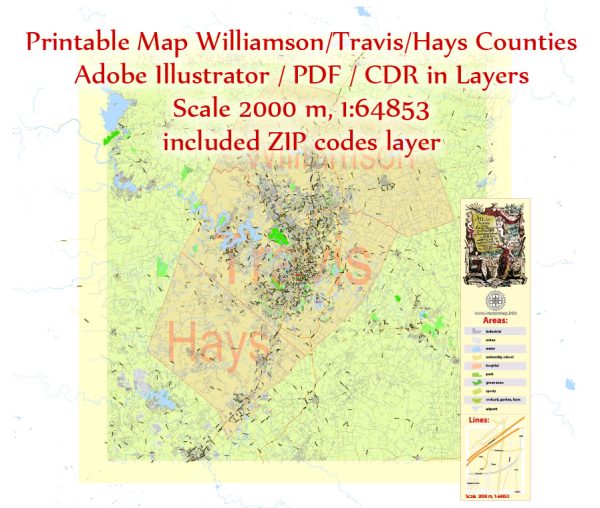Williamson, Travis, and Hays Counties in Texas are part of the Greater Austin metropolitan area, and each has a unique history of urban development. Here’s an overview of the urban development history for each county:
Williamson County:
- Early Settlement (19th Century): Williamson County was established in 1848 and experienced early settlement with an agrarian economy. Towns like Georgetown, the county seat, were founded during this period.
- Railroad and Economic Growth: The arrival of the railroad in the late 19th century spurred economic growth. Georgetown and other towns became shipping points for agricultural products, contributing to the region’s prosperity.
- Cotton Industry: Like many parts of Texas, Williamson County relied heavily on cotton farming. The cotton industry played a significant role in the local economy during the late 19th and early 20th centuries.
- Urbanization and Education: Georgetown, Round Rock, and other communities in Williamson County gradually urbanized. The establishment of Southwestern University in Georgetown in 1873 contributed to the area’s cultural and educational development.
- Suburban Growth (Late 20th Century): In the latter half of the 20th century, Williamson County experienced significant suburban growth, particularly in cities like Round Rock. The availability of land and proximity to Austin attracted residents looking for a suburban lifestyle.
- Technology and Business Hub: Williamson County, especially Round Rock, became known for its role in the technology industry. Dell Technologies, one of the world’s largest technology companies, has its headquarters in Round Rock, contributing to the county’s economic development.
Travis County:
- Austin’s Early Years (19th Century): Austin, the capital of Texas and the seat of Travis County, was established in 1839. The city’s development was influenced by its role as the state capital and its proximity to the Colorado River.
- Educational and Government Institutions: The presence of the University of Texas at Austin, founded in 1883, and various state government offices has had a profound impact on Austin’s development. These institutions contributed to the city’s growth and cultural vibrancy.
- Music and Cultural Scene: Austin gained a reputation as the “Live Music Capital of the World” due to its vibrant music scene. Events like South by Southwest (SXSW) and the Austin City Limits Music Festival have further solidified the city’s cultural identity.
- Tech Industry and Urbanization: In the late 20th century and early 21st century, Austin experienced significant growth, driven in part by the technology industry. The city became a hub for tech companies, startups, and innovation. Urbanization intensified with the development of the downtown area and surrounding neighborhoods.
- Population Growth and Challenges: Austin faced challenges associated with rapid population growth, including issues related to transportation, affordability, and infrastructure. Efforts to address these challenges have been ongoing, with a focus on sustainable development.
Hays County:
- Early Settlement and Agriculture: Hays County’s history is rooted in early settlement and agriculture. San Marcos, the county seat, was established in 1851 along the Camino Real trade route.
- Education and Industry: The establishment of Southwest Texas State Normal School (now Texas State University) in 1899 contributed to the educational and cultural development of San Marcos. The city also became known for its early industry, including cotton gins and gristmills.
- Natural Springs and Recreation: The presence of natural springs, such as the San Marcos Springs, attracted visitors and contributed to the growth of recreational activities. San Marcos River became a focal point for outdoor recreation.
- Suburban Expansion: Similar to neighboring counties, Hays County has experienced suburban expansion in recent decades. Cities like Kyle and Buda have seen population growth and residential development, fueled in part by their proximity to Austin.
- Texas State University and Growth: Texas State University’s continued growth has played a role in shaping San Marcos as a college town. The city’s population has grown, and efforts have been made to balance development with preserving natural resources and cultural heritage.
Overall, the history of urban development in Williamson, Travis, and Hays Counties reflects a dynamic interplay of factors, including economic activities, educational institutions, technological advancements, and responses to population growth. Each county has its unique characteristics, but together they contribute to the diverse and interconnected Greater Austin metropolitan area.


 Author: Kirill Shrayber, Ph.D.
Author: Kirill Shrayber, Ph.D.